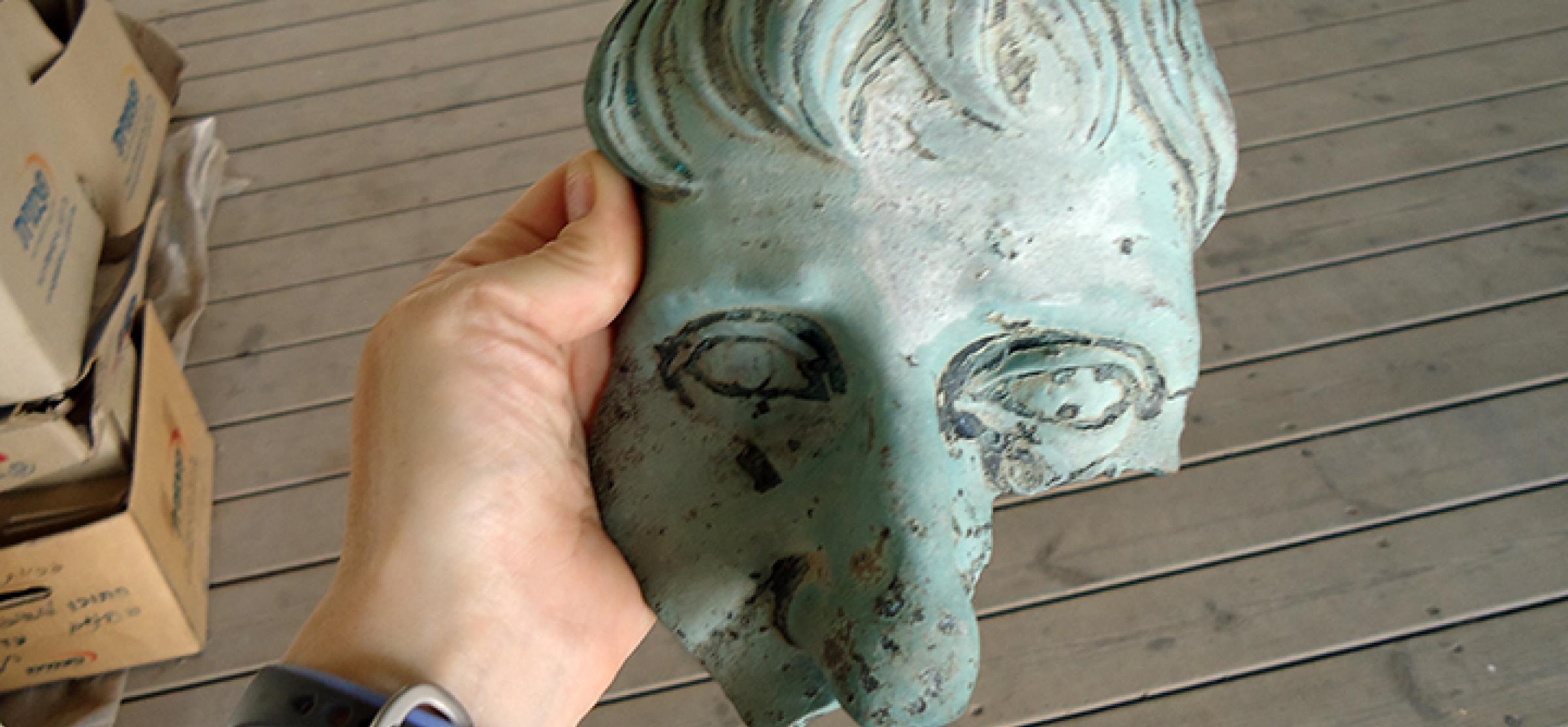By Adrian Velonis, Kate Hawthorne
Bridget Buxton, Associate Professor of History at the University of Rhode Island (URI) specializing in Mediterranean underwater archaeology, came to Bryn Mawr on November 28 to deliver a talk about her impressive work unearthing treasures of the past. As co-director of cooperative excavations between URI and the Israeli Antiquities Authority Maritime Unit near Caesarea, she has helped spearhead several major archaeological discoveries in the harbor of Caesarea, a coastal town in northern Israel, and nearby harbors.
Known in antiquity as “Caesarea Maritima,” the city was founded by Herod the Great in c. 22–10 BCE, quickly rising to prominence as the capital of the Roman province of Iudæa (Judaea) and a center of maritime trade in the Eastern Mediterranean. After the fall of the Roman Empire, it came under the rule of the Byzantines, various Islamic caliphates, and briefly European crusaders, before eventually being conquered by the Ottomans in 1516–17.
This history of trade and conquests has given maritime archaeologists an incredible amount of material for academic research. As Professor Buxton shared during her talk, “I like to tell students that every map is a treasure map.” On her recent expeditions, Buxton’s team made use of sub-bottom profiling systems and sonar to scan the seafloor in the region for ancient shipwrecks. To find the most well-preserved artifacts, she has focused her attention underneath the sand of ancient harbors, rather than the deep sea.
Within a day of scanning, Buxton had found several 18–19th century ships, including two Napoleonic warships near the Bronze Age city of Acre (otherwise known as “Akko”) and the medieval fortress Château Pèlerin, both a relatively short distance from Caesarea. Yet, even more discoveries were on the horizon. At one point, the team’s sonar equipment was accidentally left online, and the movement of the sands on the seafloor at the time allowed them to detect a lost Egyptian fleet from the 1830s. The much older Ptolemaic fleet that they were ultimately searching for was likely buried under deeper layers of sand, and would be significantly more difficult to locate.
Buxton noted in the talk that her team came across coral in the water near Akko during their search, but that it could not have possibly grown in a harbor so shallow. This led them to conclude that Akko’s harbor had been transformed over time; at its height, it was perhaps as much as three times bigger and deeper than previously thought. Evidently, various earthquakes and tsunamis as early as 140 BCE changed the landscape of the seabed enough that any number of ancient artifacts were buried underneath the sand. This was incredible news for the researchers: it meant that everything was still down there, awaiting excavation!
A storm off the coast of Caesarea displaced a great amount of sand in the harbor, prompting the Israeli government to request that the team work on mapping the region before any hidden artifacts were again obscured by the sands. This turned out to be a jackpot for Buxton: she first located a huge trove of gold coins dating back to the medieval Fatimid Caliphate, the largest such discovery from the period.
Even more notably, she located what appeared to be one of the largest Roman treasure wrecks ever, with about two tons of special finds, five large statues, a massive collection of Roman glass and mirrors, and other artifacts. Another storm later covered the site in 2–3 meters of sand, so it has not been excavated any further.
Previous expeditions had not revealed any ancient shipwrecks around Caesarea, so these discoveries were extremely fortunate. Complications related to maritime archaeology frequently arise due to the weather; it is uncommon to consistently experience enough calm days to do accurate analysis, delaying the entire process.
However, the new “Digski” class of maritime research vessels developed by URI and Buxton may help researchers “dig in difficult conditions” in the future. Digski-class RVs may include dual kill switch systems and integrated sonar, as well as connections to other technologies such as watches and even the Zapata flyboard. These advancements in technology will help to address a number of logistical issues surrounding coastal oceanographic research for years to come.
Photo credit: Bryn Mawr College
